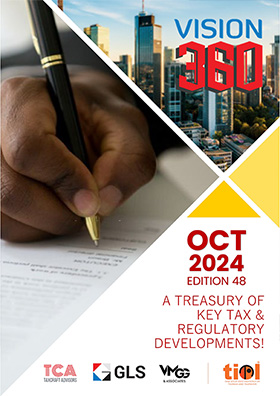Govt releases New Policy Guidelines; Commercial utilisation of land owned by Major Ports to be expensive
By TIOL News Service
MUMBAI, JAN 16, 2014: THE Centre today unveiled a new policy guidelines for major ports, aimed at helping them leverage their land resources for commercial advantage. Participating in the 'Ports in India' annual conference in Mumbai, Shipping Secretary Vishwapati Trivedi said the new guidelines provide necessary regulatory framework for land allotment by major ports. Mr.Trivedi said these guidelines have been drawn to help the ports to carry out leasing and licensing of port land in a transparent manner. Discretionary powers have been reduced and tender-cum-auction has been prescribed as the most preferred method of allotment, he added.
Major ports in India have between them 2.64 lakh acres of land, which is a major resource. So far, the land utilization has not been optimum and often yielded lesser returns. The thrust of the new policy has been on linking the value of land with prevailing market rates.
Under the new policy guidelines, land can be allotted only through licensing in Customs bond areas by inviting competitive bidding, while land outside Custom bond areas can be leased through tender-cum-auction. There is also a provision to license land outside Customs bond areas, but it should be only for port related activities. The Boards of respective ports can approve leasing of land for a period up to 30 years. For leasing of land beyond 30 years and up to 99 years, approval of the Government has to be obtained through the mechanism of Empowered Committee.
All the 12 major ports of the country are required to draw land use plan covering all land owned or managed by them. The new guidelines are applicable to all major ports in India except for the land relating to township areas in Mumbai, Kolkata and Kandla.
The new policy guidelines for land management are part of the on going process of port reforms and liberalization. While Major Ports, owned by the Centre operate in a comparatively more regulated environment, the non-major ports, comprising state ports and private ports enjoy substantial degree of flexibility. The government has been working towards creating a level playing field for major and non-major ports. Earlier, in 2013, as a part of reform process in the Ports sector tariff setting in major ports was liberalized and indexed to inflation and minimum efficiency standards were prescribed for cargo terminals.
The 12 major ports in India – Kandla, Mumbai, JNPT, Marmugao, New Managlore, Cochin, Chennai, Ennore, V O Chidambarnar, Visakhapatnam, Paradip and Kolkata (including Haldia) handle approximately 61% of cargo traffic. The Government is committed to further augmenting the port capacity in the major ports sector.
During 2013-14 it is planned to augment port capacity by 220 mtpa through 30 port projects. Out of these 20 port projects, with a capacity of approximately 100 mtpa have already been approved. The remaining port projects, including the ambitious Rs 8,000 crore JNPT Terminal-4, are likely to be approved during the fourth quarter of the current fiscal.














